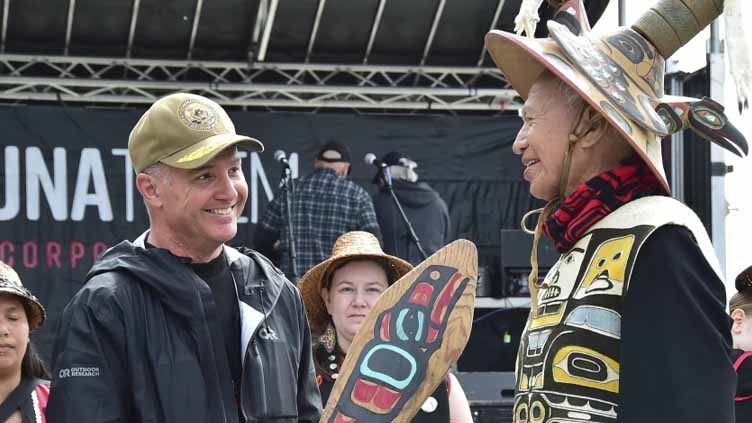US Navy will apologize for the 1882 obliteration of a Tlingit village in Alaska

World
“An apology is not only warranted, but long overdue,” she said.
ANCHORAGE, Alaska (AP) — Shells fell on the Alaska Native village as winter approached, and then sailors landed and burned what was left of homes, food caches and canoes. Conditions grew so dire in the following months that elders sacrificed their own lives to spare food for surviving children.
It was Oct. 26, 1882, in Angoon, a Tlingit village of about 420 people in the southeastern Alaska panhandle. Now, 142 years later, the perpetrator of the bombardment — the U.S. Navy — is set to say it is sorry.
Rear Adm. Mark Sucato, the commander of the Navy’s northwest region, will issue the apology during a ceremony on Saturday, the anniversary of the atrocity. While the rebuilt Angoon received $90,000 in a settlement with the Department of Interior in 1973, village leaders have for decades sought an apology as well, beginning each yearly remembrance by asking three times, “Is there anyone here from the Navy to apologize?”
“You can imagine the generations of people that have died since 1882 that have wondered what had happened, why it happened, and wanted an apology of some sort, because in our minds, we didn’t do anything wrong,” said Daniel Johnson Jr., a tribal head in Angoon.
The attack was one of a series of conflicts between the American military and Alaska Natives in the years after the U.S. bought the territory from Russia in 1867. The U.S. Navy issued an apology last month for destroying the nearby village of Kake in 1869, and the Army has indicated that it plans to apologize for shelling Wrangell, also in southeast Alaska, that year, though no date has been set.
The Navy acknowledges the actions it undertook or ordered in Angoon and Kake caused deaths, a loss of resources and multigenerational trauma, Navy civilian spokesperson Julianne Leinenveber said in an email.
“An apology is not only warranted, but long overdue,” she said.
Today, Angoon remains a quaint village of about 420 people, with colorful old homes and totem poles clustered on the west side of Admiralty Island, accessible by ferry or float plane, in the Tongass National Forest, the nation’s largest. The residents are vastly outnumbered by brown bears, and the village in recent years has strived to foster its ecotourism industry. Bald eagles and humpback whales abound, and the salmon and halibut fishing is excellent.
Accounts vary as to what prompted its destruction, but they generally begin with the accidental death of a Tlingit shaman, Tith Klane. Klane was killed when a harpoon gun exploded on a whaling ship owned by his employer, the North West Trading Co.
The Navy’s version says tribal members forced the vessel to shore, possibly took hostages and, in accordance with their customs, demanded 200 blankets in compensation.
The company declined to provide the blankets and ordered the Tlingits to return to work. Instead, in sorrow, they painted their faces with coal tar and tallow — something the company’s employees took as a precursor to an insurrection. The company’s superintendent then sought help from Naval Cmdr. E.C. Merriman, the top U.S. official in Alaska, saying a Tlingit uprising threatened the lives and property of white residents.


